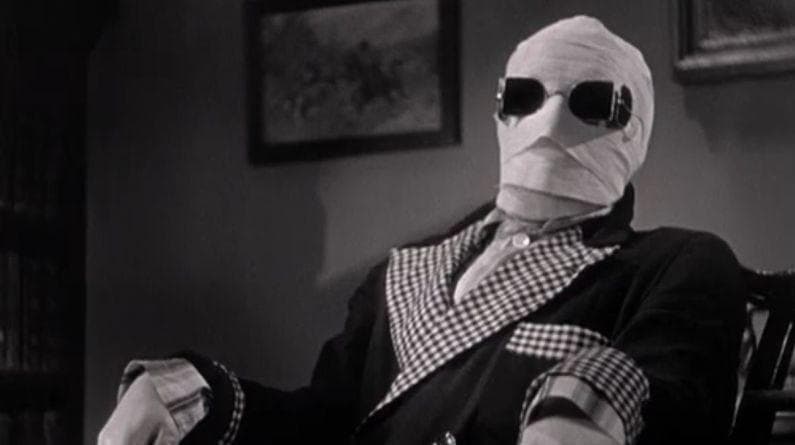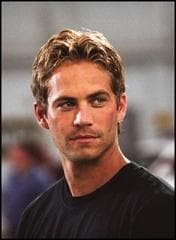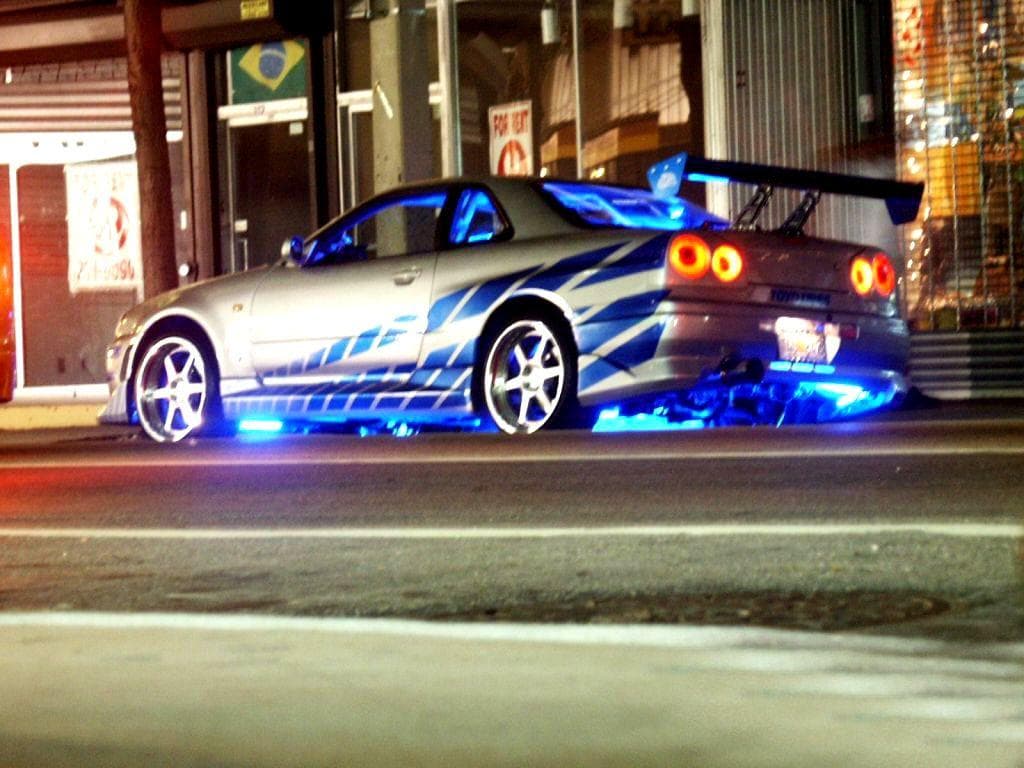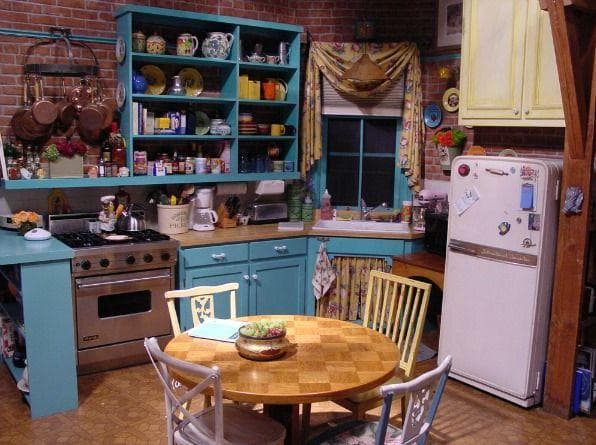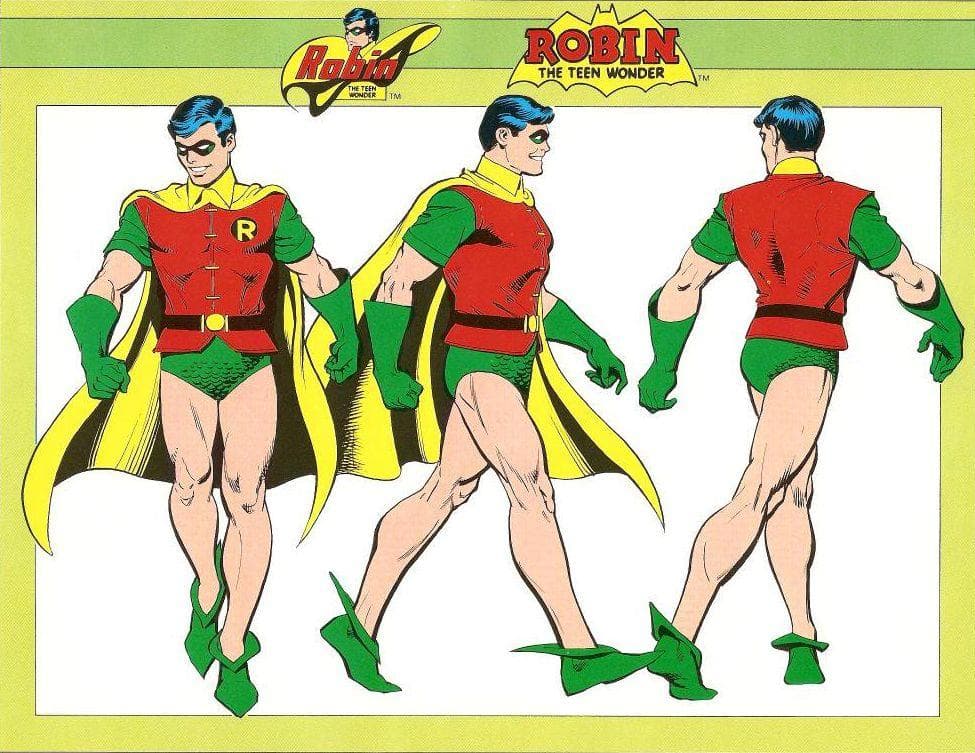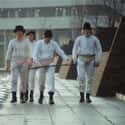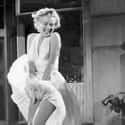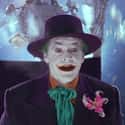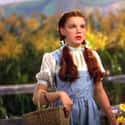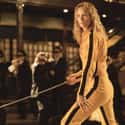-
(#13) A Clockwork Orange
- Malcolm McDowell, Warren Clarke, Steven Berkoff, David Prowse, Adrienne Corri, Aubrey Morris, George Coulouris, Patrick Magee, Pat Roach, Michael Bates, Gaye Brown, John Clive, Margaret Tyzack, Philip Stone, Carol Drinkwater, Miriam Karlin, Anthony Sharp, John Savident, Godfrey Quigley, Peter Burton, Clive Francis, Gillian Hills, Sheila Raynor, Madge Ryan, James Marcus, Virginia Wetherell, Michael Gover, Carl Duering, John J. Carney, Vivienne Chandler, Katya Wyeth, Neil Wilson, Billy Russell, Michael Tarn, Paul Farrell, Robert Bruce, Norman Gay, Katharina Kubrick, Andros Epaminondas, Prudence Drage, Fred Hugh, Helen Ford, Maurice Bush, Alec Wallis, Shirley Jaffe, Barrie Cookson, Olive Mercer, Frankie Abbott, Leslie Nye, Tom Sye, Margaret Heald, Nat Pearn, Sister Watkins, Jeremy Curry, Steadman Clark, Winifred Sabine, Rex Rashley, Craig Hunter, Dr. Gundry, Barbara Scott, Jan Adair, Lee Fox, Richard Connaught, Cheryl Grunwald, Shane Shelton, Lindsay Campbell, Henry Robert, Arthur Tatler, Peter Hannon, Roy Beck, Pauline Taylor, Nicholas Hill, Fred Real, George O'Gorman, David Dawkins
You wouldn't think white would be the right color to wear if you're planning to partake in "a bit of the old ultraviolence," but that's exactly what Alex DeLarge and company wear in Stanley Kubrick's 1971 adaptation of A Clockwork Orange. It isn't hard to see what he was getting at. White is a clean, pristine color, and the characters are engaged in behavior that's bloody and messy. Irony!
Beyond that, the use of white is meant to mock high society. The color has long been associated with wealth and privilege, with members of the elite famously believing you shouldn't wear white after Labor Day. Alex's white shirt, pants, codpiece, and suspenders are accentuated with a bowler hat and a cane - two more fashion pieces associated with being old-school rich. Combined, they allow Alex to make fun of a class to which he does not belong. He imitates their fashion sense, then behaves in a manner completely inconsistent with their lifestyle.
Writing for the BFI, Elena Lazic was spot-on in saying that "seeing the violent images of Alex's gang framed by and absorbed into a soft aesthetic is unsettling in itself."
-
(#12) The Seven Year Itch
- Marilyn Monroe, Carolyn Jones, Evelyn Keyes, Marguerite Chapman, Victor Moore, Oskar Homolka, Tom Ewell, Robert Strauss, Sonny Tufts
Few images in cinema history are as indelible as the one from Billy Wilder's The Seven Year Itch, in which Marilyn Monroe walks over a sidewalk grate and a gust of air blows up her flowing white dress. In this particular instance, the symbolism comes not from the garment itself, but rather from the combination of the dress and the actress wearing it.
White, as most people know, is a color of purity, innocence, and cleanliness. Monroe, on the other hand, is an all-time sex symbol who inspired a lot of impure, lustful, and just plain dirty thoughts among viewers. That idea is vital to the story, which finds a happily married man tempted by his comely neighbor. Putting a voluptuous vixen like Monroe in a color that screams purity plays on the psychological "Madonna-whore dichotomy" in which men view women as either chaste and pure or lusty and seductive. In this instance, she's seen in his eyes as both, simultaneously, which is where the comedy comes in. She's an example of unattainable perfection.
Costume designer William Travilla knew that was a fun concept to play with. He described the white dress as "cool and clean, in a dirty, dirty city."
-
(#10) Batman
- Jack Nicholson, Kim Basinger, Michael Keaton, Jack Palance, Billy Dee Williams, Jerry Hall, Michael Gough, Pat Hingle, Tracey Walter, Robert Wuhl, William Hootkins, Garrick Hagon, Denis Lill, Christopher Fairbank, Rachel Ryan, Sam Douglas, Paul Michael, Michael Balfour, Richard Durden, Steve Plytas, Rocky Taylor, Paul Birchard, Mac McDonald, John Sterland, Lee Wallace, Richard Strange, Philip Tan, Edwin Craig, John Dair, Terence Plummer, Del Baker, Leon Herbert, George Roth, Carl Chase, George Lane Cooper, Priscilla Cory, David Baxt, Pat Gorman, Wayne Michaels, Philip O'Brien, Katie Harper, Christian Wolf-La'Moy, Lachele Carl, Joel Cutrara, Keith Edwards, Liza Ross, Hugo Blick, Clyde Gatell, Valentino Musetti, Vincent Wong, Kit Hollerbach, Bruce McGuire, Clive Curtis, Pam Rose, Sharon Holm, Elliott Stein, Charles Roskilly, Adrian Meyers, Jon Soresi, Anthony Wellington, Amir M. Korangy, Jazzer Jeyes
In most cinematic iterations of Batman, the Joker is shown prominently wearing a purple suit. It's a perfect color for a supervillain. For starters, purple is rarely found in nature, which automatically gives it a mysterious, bordering on supernatural, aura. It's also the most powerful wavelength of electromagnetic energy, so we tend to associate it with magic or energy. Since purple is a secondary color, it nicely opposes the primary colors typically worn by superheroes.
Jack Nicholson wore a purple suit in Tim Burton's Batman, as did Heath Ledger in The Dark Knight. In each case, the costume is designed to unsettle by playing upon those qualities. The Joker is shown as an unusually disturbed figure with an unpredictable, dangerous energy and a mean streak that stands in direct opposition to the more noble deeds of Bruce Wayne's alter ego.
-
(#9) The Wizard of Oz
- Judy Garland, Margaret Hamilton, Frank Morgan, Billie Burke, Ray Bolger, Bert Lahr, Pinto Colvig, Rolfe Sedan, Ken Darby, Billy Curtis, Adriana Caselotti, Meinhardt Raabe, Jerry Maren, Jack Haley, Billy Bletcher, Charley Grapewin, Elly Annie Schneider, Clara Blandick, Candy Candido, Ruth Duccini, Mitchell Lewis, Margaret Pellegrini, Harry Wilson, Oliver Smith, Charles Irwin, Tyler Brooke, Lois January, Buster Brodie, Mickey Carroll, nm0467071, Ethelreda Leopold, Pat Walshe, Robert St. Angelo, Eleanor Keaton, 'Little Billy' Rhodes, Abe Dinovitch, Tommy Cottonaro, Daisy Earles, Dona Massin, Harry Earles, Charles Becker, Bud Linn, Terry, Olga C. Nardone, Lee Murray, Elvida Rizzo, Lorraine Bridges, Helen Seamon, Jackie Gerlich, Paul Dale, Sig Frohlich, Rad Robinson, Jon Dodson, George Noisom, Ambrose Schindler, George Ministeri, Fern Formica, August Clarence Swenson, Amelia Batchelor, Jack Paul, Gracie Doll, Nita Krebs, Harry Cogg, Parnell St. Aubin, Dorothy Barrett, Yvonne Moray, Phil Harron, Sid Dawson, Ralph Sudam, Freddie Retter, Jimmy the raven, Johnny Winters
Everyone remembers the ruby red slippers from The Wizard of Oz, but Dorothy's blue gingham pinafore is just as iconic in its own way. The outfit absolutely pops out when the movie switches from black and white to color, which was likely a factor in the decision to have Judy Garland wear it.
Another factor should be considered, too. In color theory, different shades of blue can mean different things. Lighter blue is commonly accepted to represent a feeling of spirituality, peace, or serenity. Those are, obviously, very optimistic things. Dorothy is an equally optimistic person, believing that she and her friends the Tin Man, the Scarecrow, and the Cowardly Lion can make it to Oz, and that she can eventually return back home to Kansas. It's her optimism, reflected in that blue pinafore, that keeps the journey moving forward.
Pulling out a little further, it has been suggested that Dorothy's blue costume - combined with the white blouse underneath and the red shoes - represent the optimism of America itself coming out of the Great Depression.
-
(#4) Mean Girls
- Lindsay Lohan, Rachel McAdams, Amanda Seyfried, Tina Fey, Amy Poehler, Lacey Chabert, Lizzy Caplan, Tim Meadows, Ana Gasteyer, Daniel DeSanto, Neil Flynn, Jonathan Bennett, Diego Klattenhoff, Daniel Franzese, Jonathan Malen, Eve Crawford, Jack Newman, Bruce Hunter, Laura DeCarteret, Clare Preuss, Dan Willmott, Talia Russo, Marc Allen, Alisha Morrison, David Reale, Dwayne Hill, Darryl Armstrong, Kaylen Christensen, Sima Fisher, Rajiv Surendra, Krysta Carter, Ely Henry, Chris Ploszczansky, Julia Chantrey, Tara Shelley, Jan Caruana, Elana Shilling, Wai Choy, Michelyn Emelle, Jill Morrison, Bathsheba Garnett, Les Porter, Olympia Lukis, Noelle Boggio, Kristen Bone, Stefanie Drummond, Megan Millington, Nicole Crimi, Shannon Todd, Andreja Punkris, Jo Chim, Randi Lee Butcher, David Sazant, Erin Jarvis, Tyson Fennell, Sharron Matthews, Valerie Casault, Molly Shanahan, Miranda Edwards, Erin Thompson, Danielle Nguyen, Jessie Wright, Jacky Chamberlain, Jeff Moser, Ky Pham, Stephan Dickson, Michelle Hoffman, David Aherne, Graham Kartna, Nicholas A. Catalano, Alexandra Stapley, Ayo Agbonkpolo, Jordan Dawe, John Gadsden, Lucila Grzetic
Pink is generally equated with femininity. In fact, the color has long been used for baby girls in clothing, bedding, and, more recently, gender reveals. Red tends to represent strength or aggression. When white is added, it softens those qualities, creating something more representative of romance, charm, or tenderness.
The ensembles worn by Lindsay Lohan and her co-stars in the comedy Mean Girls use pink ironically. These characters are not sweet and demure. They're, well, mean, even going so far as to pen nasty comments about classmates in a "burn book." The use - or, one could argue, abuse - of pink in this way weaponizes femininity. Cady and pals might look pretty on the outside, but they're often ugly on the inside. Their outward appearance belies a sense of malice underneath.
The film's costume designer, Mary Jane Fort, compared the mean girls in their pink ensembles to over-indulging at a candy store, saying, "When you see this group, you want to feel like you walked into something delicious and wonderful even though it's kind of bad for you."
-
(#6) Kill Bill Volume 1
- Uma Thurman, Lucy Liu, Quentin Tarantino, Daryl Hannah, Vivica A. Fox, David Carradine, Michael Madsen, Chiaki Kuriyama, Sonny Chiba, Chia Hui Liu, Michael Parks, Michael Bowen, Julie Dreyfus, Ai Maeda, Jonathan Loughran, Hikaru Midorikawa, James Parks, Jun Kunimura, Christopher Allen Nelson, Akaji Maro, Kazuki Kitamura, Sakichi Satô, Zhang Jingchu, Shun Sugata, Ambrosia Kelley, Naomi Kusumi, Yoshiyuki Morishita, Issei Takahashi, Juri Manase, Shu Lan Tuan, Goro Daimon, Michael Kuroiwa, Yamanaka Soh, Ronnie Yoshiko Fujiyama, Tetsuro Shimaguchi, Stevo Polyi, Yoshiko Yamaguchi, Sachiko Fujii, Xiaohui Hu, Yōji Tanaka
Uma Thurman played "The Bride" in Quentin Tarantino's Kill Bill saga, but it's not a wedding dress that comes to mind when you think of her. Instead, it's that yellow jumpsuit, which has gone on to become iconic. Keeping in mind that this character is motivated by a desire for revenge, yellow might seem an unlikely choice, given that it's considered a bright, cheery color.
It's important to remember, though, that the Bride wants revenge because her happy day was ruined by assassins. She tells Bill that she's pregnant right before he unloads his weapon on her. As the Bride later eliminates her enemies (and their henchmen), her yellow outfit becomes more stained with red blood. We can therefore infer that the yellow represents a single-minded obsession with the anticipated happiness that a marriage and baby would have brought, while the red is the trauma she sustained because it was taken away from her.
At the same time, it could be argued that the yellow jumpsuit also represents Tarantino's own single-minded obsession. Kill Bill was inspired by his favorite martial arts films, especially those of Bruce Lee, who frequently wore yellow onscreen (including in his final film, Game of Death, in which he dons the original version of the Bride's jumpsuit). Dr. Steven Peacock, head of media at the University of Hertfordshire, points out, "Tarantino is a very accomplished filmmaker in his stylistic choice, and color would be a huge part of that. He's drawing together all those associations of previous movies and character types and costume design and iconography - it’s all there for a reason, folded into the drama on-screen in a way that doesn’t suggest itself as willfully placed."
New Random Displays Display All By Ranking
About This Tool
Each individual movie scene plays a vital role. Whether it is based on a certain aesthetic choice or the coloring of the scene, colors subconsciously affect the mood of the audience. Color can represent many different things or feelings. Finding an attractive and unique way to use color to arouse the emotions of the audience is the real challenge. Let's take a look at some of the different colors used in movies and feel the emotions that color brings.
The random tool generates 16 items, you can check the list of movies. Many film producers like to use red, because it can easily arouse the original emotions. Lets' figure out that your favorite movie costumes really mean.
Our data comes from Ranker, If you want to participate in the ranking of items displayed on this page, please click here.

